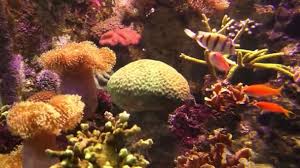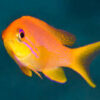Using the Dragon as a Symbol of Healing Power

The dragon, a revered and potent symbol across various cultures, has long been associated with power, wisdom, and strength. While in some parts of the world, dragons are viewed with fear and awe due to their mythical and destructive nature, in others, they embody healing, transformation, and restoration. In many Asian cultures, the dragon is not only seen as a divine and supernatural being, but also as a symbol of the natural forces that promote health, vitality, and longevity. This article explores the powerful symbolism of dragons in the context of healing, their association with restorative practices in various cultures, and the enduring belief that these mythical creatures possess the power to cure and restore balance to both the body and the spirit.
The Dragon as a Symbol of Healing
In traditional Chinese, Japanese, Korean, and Vietnamese cultures, the dragon is considered a symbol of protection, energy, and healing. While it is often associated with imperial power and good fortune, the dragon’s connection to healing is grounded in its ability to balance and harmonize the elements of nature. The ancient belief that dragons are creatures of water, able to control rainfall, rivers, and seas, reflects their connection to the life-giving forces of nature. Water is the essence of life and health in many cultures, symbolizing purification, nourishment, and renewal. As such, dragons are seen as guardians of this vital element, ensuring the well-being of all living things.
Dragons in these cultures are believed to have the ability to restore balance to the world and the body. Their healing power is often invoked in both spiritual and physical practices, where the dragon serves as a metaphor for the restorative energies that guide and heal. In these traditions, the dragon’s attributes—such as its strength, agility, and regenerative powers—are often transferred to the healing process. The dragon is seen as a force that can protect against disease, restore vitality, and restore harmony to those who seek its aid.
The Dragon in Chinese Medicine: Healing and Vitality
Traditional Chinese Medicine (TCM) is one of the oldest and most comprehensive medical systems in the world, encompassing practices such as acupuncture, herbal medicine, and dietary therapy. In Chinese folklore, the dragon is often associated with healing and longevity, and its image is frequently used in the iconography of traditional medicine. Dragons are believed to have the ability to manipulate the life force or “Qi” (气), a fundamental energy that flows through the body and supports health and vitality.
One of the most famous examples of the dragon’s healing power is the use of “dragon’s blood,” a resin derived from the Daemonorops plant. This substance has been used in TCM for centuries for its anti-inflammatory, antimicrobial, and blood-regulating properties. It is believed that dragon’s blood can restore balance to the body by promoting circulation, soothing pain, and boosting the immune system. Just as the dragon is said to regulate water and restore order in the natural world, dragon’s blood is believed to regulate the flow of energy and blood within the body, promoting healing and vitality.
Another example of the dragon’s symbolic presence in Chinese healing practices is the use of dragon fish or dragon bones in medicinal preparations. These products are used to treat a wide range of ailments, from digestive issues to joint pain. The dragon fish, with its powerful and graceful movements, is believed to possess the ability to guide the healing process by harmonizing the body’s energy and promoting the smooth flow of Qi. In TCM, the belief is that by invoking the strength and power of the dragon through these remedies, the body can achieve healing, balance, and restoration.
Dragon Imagery in Korean Folk Healing
In Korean culture, the dragon, known as “yong” (용), is also associated with healing and restoration. Similar to Chinese traditions, dragons in Korea are seen as protective and benevolent beings, often linked to rain, fertility, and the well-being of the people. The dragon in Korean mythology is believed to have the power to bring good harvests, ensure the vitality of crops, and ward off evil spirits.
In Korean folk healing practices, dragon symbols are often used in amulets, talismans, and charms to protect the body from illness and misfortune. The idea is that the dragon’s presence serves as a shield, blocking negative energies and promoting overall health. In some healing rituals, dragons are invoked through chanting, prayer, and the use of medicinal herbs that are thought to carry the dragon’s energy. These remedies are used to restore balance to the body, alleviate pain, and promote longevity.
Additionally, the use of dragon’s blood resin is common in Korean medicine, much like in China. The resin, derived from certain plant species, is believed to have powerful medicinal properties that help in treating wounds, improving circulation, and reducing inflammation. By using dragon’s blood in healing rituals, the practitioner is thought to call upon the dragon’s regenerative powers to heal the body.
Dragons in Vietnamese Folk Medicine: Vảy Rồng and Healing
In Vietnamese culture, the dragon holds significant symbolic meaning. It is often regarded as a symbol of power, wisdom, and protection. The belief in the dragon’s healing properties is deeply rooted in Vietnamese folk medicine, where the term “vảy rồng” (dragon scales) is used to describe rare and potent substances with healing abilities. These substances, often derived from plants, minerals, and animal products, are thought to have the ability to promote health and restore balance.
For example, in rural areas, the scales of certain aquatic creatures, such as the giant salamander, are considered to be dragon scales and are believed to have restorative powers. These scales are used in various remedies, often ground into a fine powder and mixed with other herbs to create a tonic that is said to improve energy levels, support digestion, and boost immunity. In Vietnamese folk medicine, the use of vảy rồng is thought to channel the power of the dragon to protect against illness and rejuvenate the body.
The dragon is also believed to protect individuals from spiritual harm, and the use of dragon symbols in Vietnamese healing practices is thought to shield the individual from negative forces. Healing ceremonies often involve invoking the dragon’s power, using dragon-themed imagery to purify the body and spirit and restore health and vitality.
The Dragon in Japanese Healing Practices
In Japanese culture, the dragon is equally revered as a symbol of power, longevity, and protection. Known as “ryu” (龍), the dragon in Japan is seen as a guardian of sacred waters and a bringer of blessings. Much like the Chinese and Korean beliefs, the Japanese dragon is often associated with healing and rejuvenation.
In Japanese traditional medicine, there is a concept known as “ryu-no-tama” (the “dragon’s pearl”), which refers to medicinal herbs and substances that are believed to hold the power of the dragon. These ingredients are used in a variety of remedies to promote well-being and restore balance to the body. The belief is that by harnessing the power of the dragon through these substances, individuals can achieve improved health, vitality, and longevity.
In addition to herbal remedies, dragon imagery is frequently used in Japanese acupuncture practices. The dragon is thought to represent the flow of energy (Qi) in the body, and acupuncture points associated with the dragon are believed to help unblock energy pathways and restore the balance necessary for optimal health.
The Symbolism of the Dragon in Modern Healing Practices
In modern times, the symbolic power of the dragon continues to influence alternative healing practices and wellness traditions. While the use of literal dragon products is rare, the cultural significance of the dragon as a healing symbol is still prominent in contemporary practices. The dragon is frequently used in spiritual healing rituals, meditation practices, and wellness therapies to invoke protection, vitality, and positive energy.
In many modern wellness practices, such as Reiki, feng shui, and crystal healing, the dragon is viewed as a powerful spiritual guide that can aid in the healing process. Whether through visualization, meditation, or the use of dragon-inspired imagery and symbols, the dragon is seen as a facilitator of transformation, helping individuals overcome physical, emotional, and spiritual challenges.
Conclusion: The Enduring Power of the Dragon’s Healing Energy
The dragon has long been a symbol of power, wisdom, and healing across various cultures. From its role in Chinese, Korean, Vietnamese, and Japanese folk medicine to its place in modern spiritual healing practices, the dragon continues to embody the transformative power of nature and the forces that govern health and vitality. Whether viewed as a protector, a source of strength, or a conduit of healing energy, the dragon’s influence on human well-being is undeniable.
By using the dragon as a symbol of healing, cultures around the world have recognized the importance of balance, vitality, and protection in the pursuit of good health. The dragon, as a legendary and mystical being, represents the eternal connection between the physical and spiritual realms, offering a powerful reminder of the potential for healing, renewal, and transformation. Through its symbolism, the dragon continues to inspire and guide those who seek to restore harmony and vitality to their bodies and minds.

